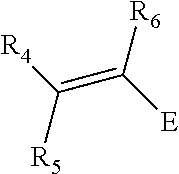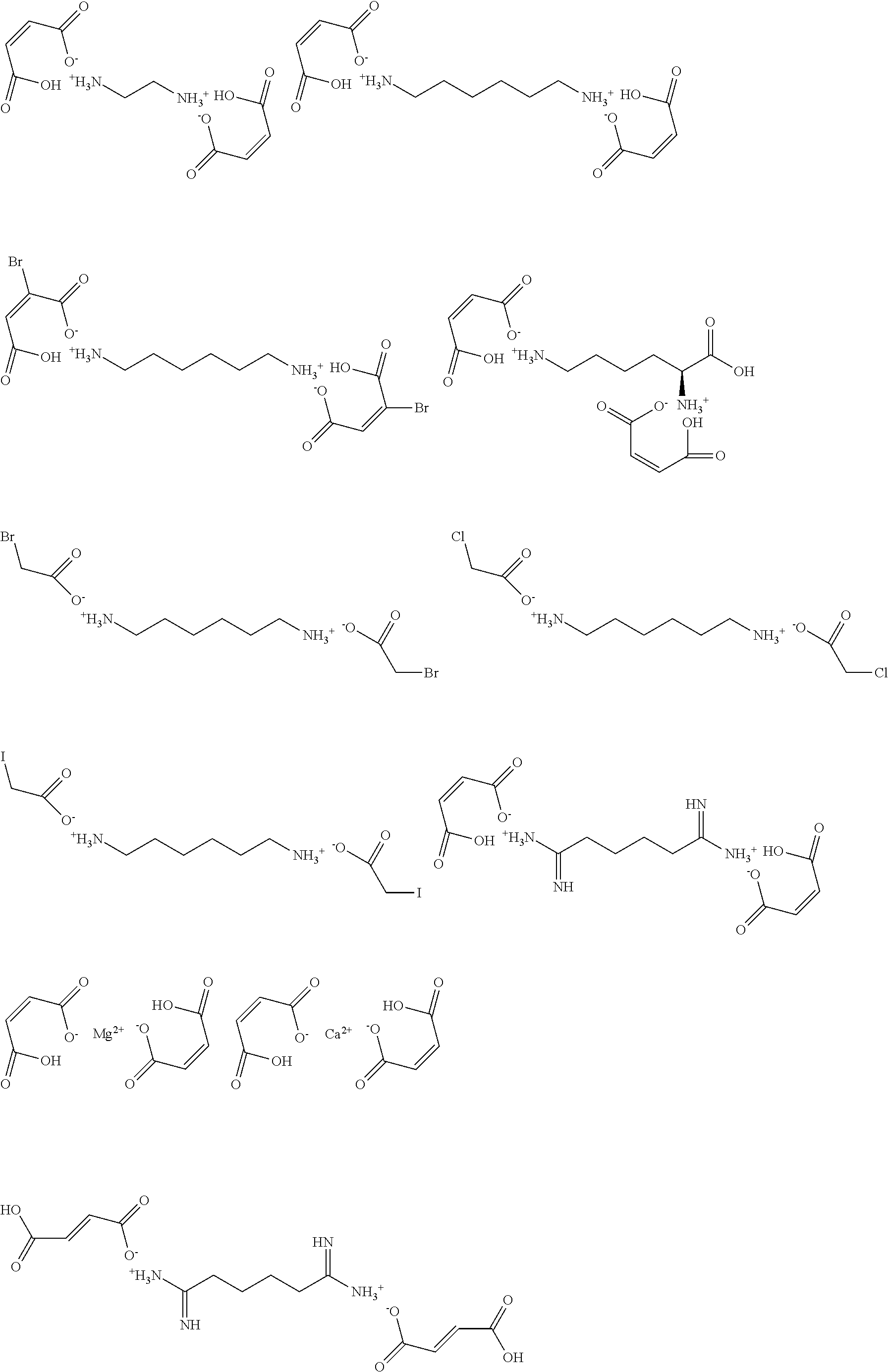Methods for fixing hair and skin
a technology for fixing hair and skin, applied in the field of compositions and methods for treating hair or skin, can solve the problems of affecting the appearance of the hair, so as to improve the appearance, improve the conditioning effect, and improve the effect of dry strength
- Summary
- Abstract
- Description
- Claims
- Application Information
AI Technical Summary
Benefits of technology
Problems solved by technology
Method used
Image
Examples
example 1
Comparison of Traditional Perm Versus Perm using Bismaleate Binding Agent
[0223]General
[0224]Hair samples were obtained from a human subject and cut in ½ inch wide wefts.
[0225]Reducing agents: Ammonium thioglycolate (ATG) was obtained from a permanent wave kit manufactured by Zotos. 300 mg of Dithiothreitol in a 10 g solution was also used as the reducing agent.
[0226]Binding formulation: A bismaleate binding agent 2,2′-(ethane-1,2-diylbis(oxy))bis(ethan-1-amine) di-maleate at a concentration of 300 mg in 10 g total solution (water) was used.
[0227]Methods
[0228]Method for Perming Hair using the Binding Agents
[0229]The hair was washed with clarifying shampoo, towel dried, and then rolled around a perm rod. Ammonium thioglycolate or dithiothreitol was then applied to the hair and left on the hair for 10 minutes to 1 hour. The hair was then rinsed for 30 seconds to 1 minute and then blotted dry with a towel.
[0230]The binding formulation was applied to the hair, via a needle nose applicato...
example 2
Comparison of Hair Breakage due to Repeated Application of Traditional Perm and the Binding Formulations
[0234]Methods
[0235]Two hair samples were obtained. Both samples were treated with dithiothreitol or ammonium thioglycolate as described in Example 1. One of the hair samples was subsequently treated with the binding formulation, while the other was neutralized with hydrogen peroxide. The process was completed the same day for the hair treated with the binding formulation. The process was completed in three days with hydrogen peroxide (traditional perm).
[0236]The procedure was repeated three times for each hair sample over a 48 hour time period.
[0237]Results
[0238]Upon visual inspections, the second hair sample treated with the binding formulation showed little or no signs of breakage. However, the first hair sample treated with hydrogen peroxide showed significant breakage.
example 3
Comparison of the Extent of Damage to Hair Previously Relaxed with a Japanese Relaxer
[0239]Methods
[0240]Two samples of hair, the first previously straightened with a Japanese relaxer (Yuko), and the second previously straightened with a no lye relaxer (African Pride Miracle Deep Conditioning) were obtained. The samples were treated as described in Examples 1 and 2 using the binding formulation.
[0241]Another hair sample, previously straightened with a no lye relaxer (African Pride Miracle Deep Conditioning) was obtained. The sample was treated with a traditional hair straightening perm (Zotos).
[0242]Results
[0243]The hair samples treated with the binding formulation showed no noticeable damage. However, the sample treated with a traditional perm showed significant breaking, even during application.
PUM
| Property | Measurement | Unit |
|---|---|---|
| molecular weight | aaaaa | aaaaa |
| pH | aaaaa | aaaaa |
| pH | aaaaa | aaaaa |
Abstract
Description
Claims
Application Information
 Login to View More
Login to View More - R&D
- Intellectual Property
- Life Sciences
- Materials
- Tech Scout
- Unparalleled Data Quality
- Higher Quality Content
- 60% Fewer Hallucinations
Browse by: Latest US Patents, China's latest patents, Technical Efficacy Thesaurus, Application Domain, Technology Topic, Popular Technical Reports.
© 2025 PatSnap. All rights reserved.Legal|Privacy policy|Modern Slavery Act Transparency Statement|Sitemap|About US| Contact US: help@patsnap.com



